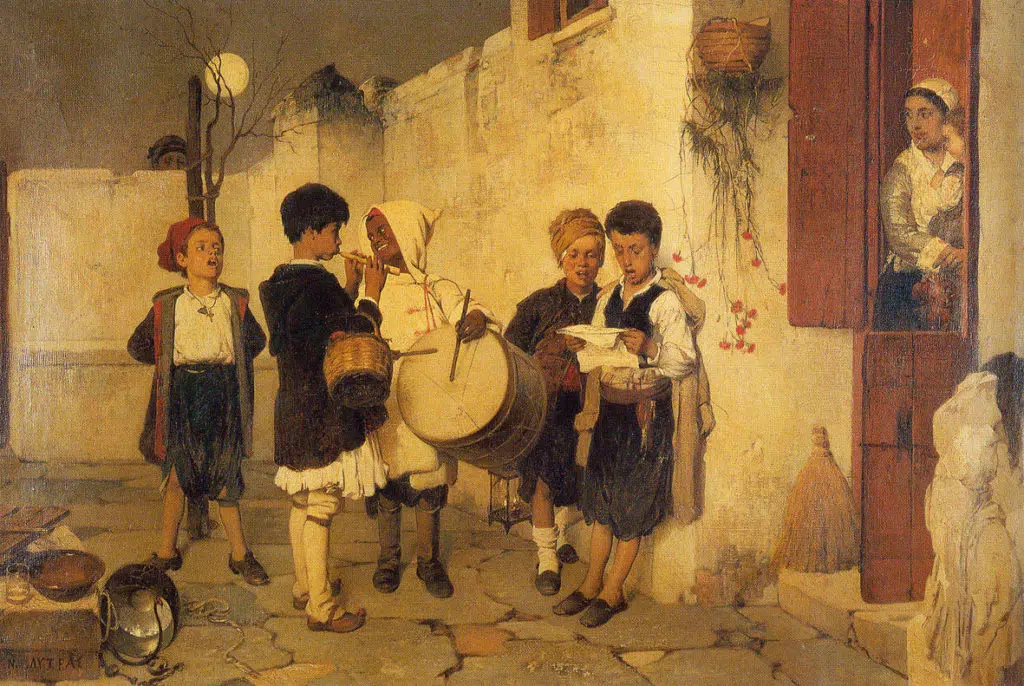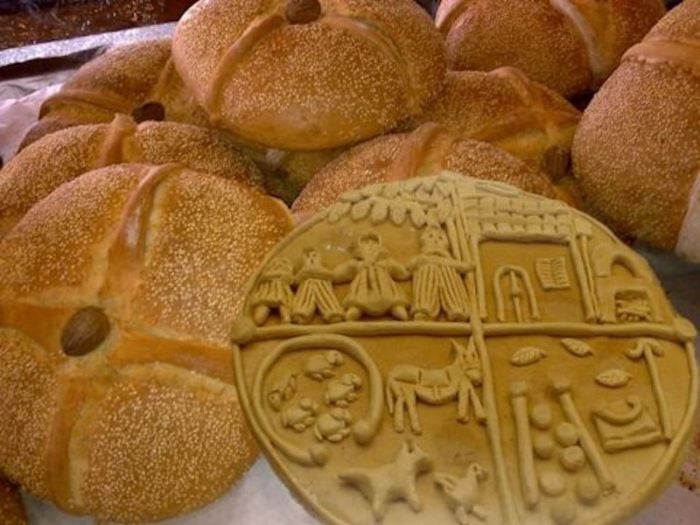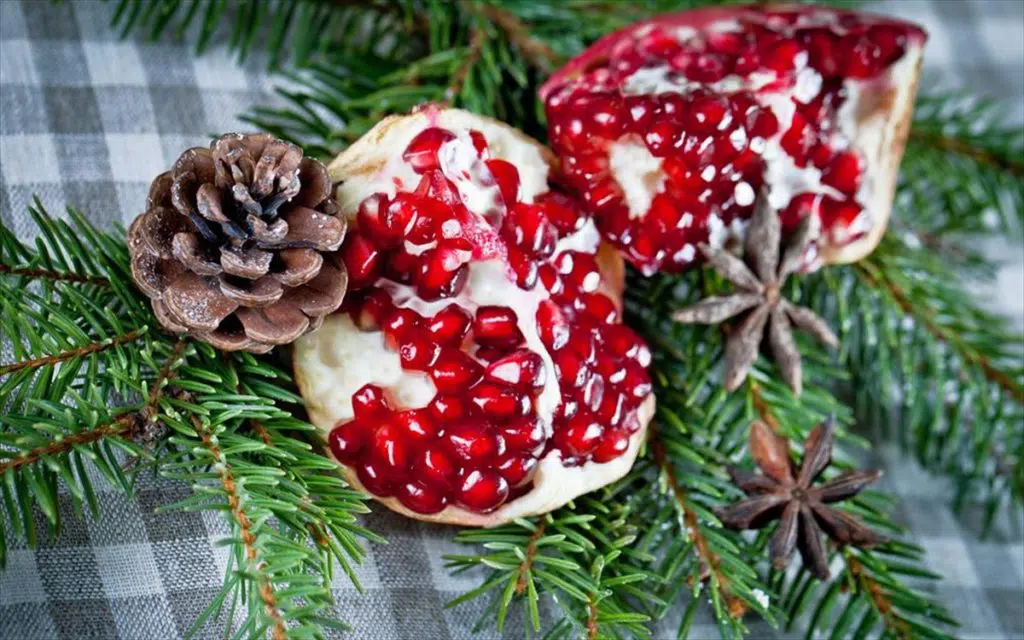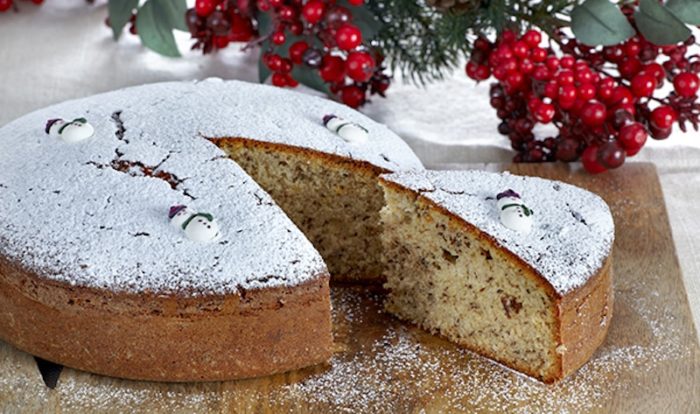
Most Christmas customs such as the Christmas tree, singing carols, and exchanging gifts, which are observed in Western countries, have become universal.
Yet, some countries have their own unique Christmas customs passed on from generation to generation, not affected by universal Christmas traditions.
In Greece, such traditions are millennia old. Today, some of them are not practiced in the big urban centers anymore, but in the provinces, most of them are still observed zealously, as tradition dictates.
Decorating the Christmas ship

The decoration of the ship is an age-old Greek Christmas custom that remains a celebratory standard in many households this time of the year, although it has been gradually replaced by the Christmas tree.
Greece is surrounded by sea and has six thousand islands to boast. Naturally, Greeks have a very long and illustrious history as seafarers. Therefore, Christmas traditions are a tribute to the sea as well.
According to tradition, the ship symbolizes the new direction that the birth of Christ gives to human life. It is a custom of old when children made their own toys.
This was so until only fifty years ago up until the first post-war decade. Up to that time, the Christmas ship was found in many Greek households and in the hands of children, who carried a ship when they toured the neighborhood to sing carols.
In some areas, mainly on the Greek islands, they still decorate a Christmas ship, while in recent years, there has been an effort in several municipalities to revive this old custom and replace the Christmas tree.
Greek carols sung by children one of many Christmas customs
Carols, which are folk songs of greeting and praise with Byzantine roots, are sung every year, mainly on the eve of Christmas, New Year’s, and Epiphany.
The carols are sung mainly by children either individually or in groups as they visit homes, shops, and public spaces accompanied by the traditional instrument of the triangle. Sometimes, other musical instruments, such as the accordion, guitar, flute, or a drum are used.
Kids go around neighborhoods and knock on doors. The person who opens the door and lets the children sing the Christmas carols then gives them some pocket money. Children do this each year to earn money in order to buy Christmas presents.

Christopsomo another cherished Greek Christmas custom
On Christmas Eve, the women of the house made the Christopsomo (The Bread of Christ) in a ritual that stands out because it is practiced with great reverence and patience in this busy time of year.
Usually round in shape, an integral feature of the Christopsomo is the engraved cross on top of the dough. Intricate pieces of bread dough with various Christmas symbols are added to the bread.
In many parts of Greece, there are variations of the custom. The most unusual of these is perhaps a custom of the island of Kefalonia in which the whole family gathers in the house of the oldest member, places three unlit torches on the floor to form the letter ‘X,’ and places the bread on them.
Then they form a circle around the Christopsomo and rest their right hand on it. The landlord pours oil on the torches and puts them in the fireplace. Then he cuts the bread, hands it out to the family, and dinner begins.
On Crete, the preparation of Christmas bread is a ritual in and of itself. The most expensive ingredients are used for its preparation, such as finely sifted flour, rose water, honey, sesame, cinnamon, and cloves.
When the dough is ready, the women take half of it and make a bun, while with the rest they make a cross with strips and place it on the bread.
In the center, they place a white nut. On the rest of the surface, they draw shapes with a knife or fork, such as flowers, leaves, fruits, symbols of abundance for the desired animal products and the harvest.
Christoxylo (Christmas wood)
The “Christmas wood” is burned throughout the festivities to warm the hearts of the faithful in Greece.
On Christmas Eve in the villages of Macedonia in northern Greece, the man of the house goes out and looks for the most beautiful, strongest piece of wood from a pine or olive tree, the so-called Christoxylo.
The selection should be quite careful, as it is intended to burn continuously in the fireplace from Christmas until Epiphany.
According to this folk belief, the Christoxylo burns throughout this period, and Christ keeps warm in the cold manger in Bethlehem. This appears to be closely related to the custom of burning wood in the fireplace so that the Kallikantzaroi, the mythical goblins that live under the earth, cannot come up and enter the home.
Every housewife must have thoroughly cleaned the fireplace so that there are no remnants of old ashes. The chimney must be cleaned very carefully as well.
On Christmas Eve, when the whole family is gathered around the fireplace, the man of the house lights the fire and places the Christoxylo on the grate, with everyone wishing for it to keep burning throughout the twelve days of the holidays.
Santa Claus comes on New Year’s Eve
Unlike the Western tradition where people exchange gifts on Christmas Eve, people in Greece exchange presents with each other on New Year’s Eve.
In Greece, New Year’s Day is also the feast of Agios Vassileios, or St. Basil, who is the Greek counterpart of Santa Clause. The Santa Claus of Greece enters through the chimney on New Year’s Eve to place his presents under the Christmas tree.
Agios Vassileios brings children their presents and ushers in the New Year in good cheer with all the family gathered around the Christmas tree, exchanging presents and wishes.

Breaking the pomegranate
On New Year’s morning, as the family goes to church, the man of the house puts a pomegranate in his pocket.
Upon his return home, he must be the first to enter his house, stepping in with his right foot first and the pomegranate in hand.
He then breaks the pomegranate, throwing it down with force so that it will break and the seeds spread thoughout. Meanwhile, he says: “In good health, happiness and joy in the new year and as many seeds the pomegranate has, this many large bills to have in our pockets all year round.”
Then the children gather and examine the seeds to see if they are crisp and crimson-colored. The stronger and more beautiful the seeds are, the happier and more blessed will be the days that the new year brings.

Vassilopita
In Greek Christmas customs, New Year’s Day is inextricably linked to the feast of Agios Vassileios (Saint Basil) and the vassilopita, which literally means the “cake of Vassileios.”
This cake-like sweet bread is often sprinkled with powder sugar or grated almonds and occasionally has raisins and nuts. Inside, there is a randomly-placed coin for the lucky person when the vassilopita is cut.
Agios Vassileios was a humble Greek saint with a black beard and a dark, shabby coat. He is thought to come from Caesarea in Cappadocia in Asia Minor to bless Greek families and receive his share of the vassilopita.
This custom calls for the sweet bread to be cut by the head of the household in a ritualized manner. First, he carves a cross on the surface and then cuts the pieces.
The first piece is for Christ and the second for the Virgin Mary. Then, there is one for Agios Vassileios, one for the poor, one for the house, and after that, the pieces go to the various members of the family.
In times past, the rich placed a golden coin inside. Nowadays, it is a coin of whatever worth the homeowner decides, either one of great or small value.
If the coin is found in one of the pieces for Christ, the Virgin Mary, or Agios Vassileios, the present goes to the church of the parish.
According to one story, the vassilopita originated from Byzantine Emperor Basil the Great, who, in order to protect Caesarea in Cappadocia from a raid by barbarians, had a fundraiser and collected gold coins and other valuables to give to the enemy so they would not loot his land.
In the end, the enemy did not succeed in invading Caesarea, and the valuables remained. Basil decided to return the valuables to his people.
Since he was unaware of what each individual had contributed, in order to be fair, Basil had all bakers in the area make small buns of bread and stuff a gold coin or a small valuable item in each of them.
The buns were distributed to everyone, and each person kept what was inside regardless of whether it was big or small in value.
It is said that children were the recipients of most of the high-value gifts inside the buns, thus creating the myth of Agios Vassileios (Santa Claus), the gift-bearer for children.
See all the latest news from Greece and the world at Greekreporter.com. Contact our newsroom to report an update or send your story, photos and videos. Follow GR on Google News and subscribe here to our daily email!



